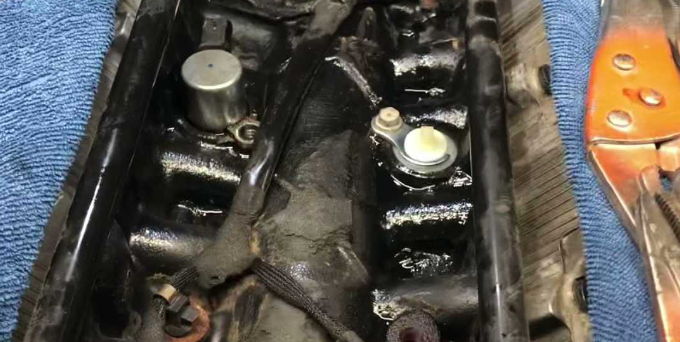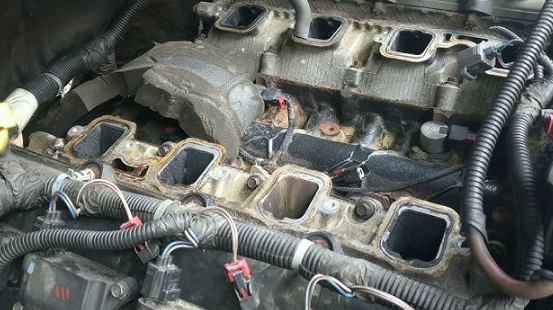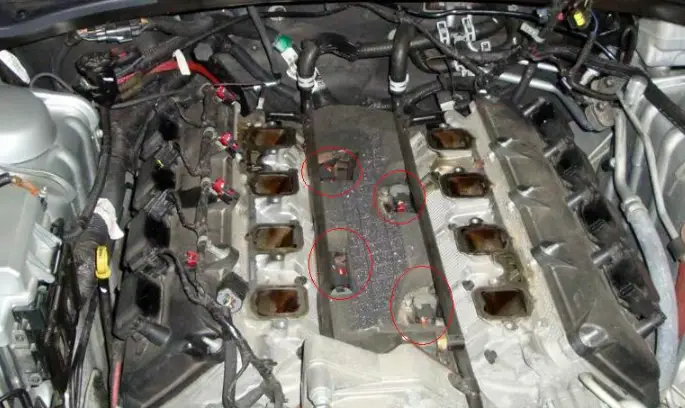The Chrysler/FCA third-generation Hemi has a Multiple Displacement System (MDS) or cylinder deactivation technology to increase fuel economy. Unfortunately, this technology can be problematic, and an MDS solenoid can fail due to low oil pressure, restricted oil passage, engine mechanical conditions, or other issues.
As such, it is best to know the signs of a bad MDS solenoid to detect when immediate attention is needed. Common symptoms include sudden jerking or sputtering of the engine, ticking noises, and lifter problems.
🚀Recommended article: Tundra 4.6 Vs. 5.7
Bad MDS Solenoid Symptoms

One of the most common 5.7 Hemi Mds Solenoid Failure Symptoms is decreased fuel economy and increased emissions. Additionally, when the MDS solenoid fails, it can cause rough idle and stalling issues while also causing problems with transmission shifts or lack thereof. Furthermore, if your engine has difficulty starting up or takes longer than usual, it may be due to malfunctioning MDS solenoids.
1. Ticking Noise
When a ticking noise is heard, it could indicate a problem with the Hemi MDS solenoid. If this issue is not addressed when first encountered, it can worsen. Additionally, no dashboard indicators will tell if the MDS system is enabled; therefore, changes in sound should be taken as a sign of possible malfunction. Owners should take note and bring their vehicles to a dealer for assessment if they suspect this component may have failed.
2. Misfiring
If an engine is misfiring, it may be due to a faulty MDS solenoid. To determine the cause of the issue, a code should be read from the machine indicating that either maintenance or replacement is needed for the solenoid. It should also be noted that although coil packs and spark plugs can contribute to such a situation, these possibilities should first be eliminated to point directly at the MDS solenoid as its source.
3. Lifter Problem
The MDS solenoid can malfunction due to internal problems, which can be assessed using a stethoscope and listening for any noise from the engine. Cumbersome codes such as P300, P301, or P308 often indicate an issue with the solenoid and should be checked as soon as possible.
4. MDS Goes On And Off Suddenly
Drivers have observed that the MDS (multi-displacement system) on Chrysler/FCA third-generation Hemi engines tends to turn on and off randomly. This can be attributed to the solenoid's damage, which affects the cylinder's functioning. Replacing the unit itself as soon as these symptoms appear is important. It is recommended that owners of vehicles with this engine type keep an eye out for any irregularities to address any issues promptly.
What To Do When You Detect Bad MDS Solenoid?

It is essential to take appropriate measures if any signs of potential failure or damage to the MDS solenoid are detected. Following the recommended steps will help fix the issue and ensure optimal performance from the device.
Fixing Exhaust Leak
The first step in addressing a bad MDS solenoid due to an exhaust leak is to identify the source of the leak. Once located, it must be adequately sealed and repaired. Doing this yourself can save you money, but if you are not confident in your ability to do so correctly, it may be best to seek professional help. All necessary steps must be taken when making repairs, as even small mistakes could lead to more significant problems.
- Take the FiberFix heat wrap.
- Clean the exhaust using a wire brush.
- Unpack the FiberFix, immediately put it in water for about 40 seconds, and squeeze any excess water.
- Wrap it around the exhaust leak and squeeze it so the resin can do its job.
- Cover the little metal tape around the FiberFix.
- Lastly, let the vehicle run for an hour.
Getting A Tuner
The multi-displacement system in a vehicle can cause vibrations when moving down the road. To prevent this from occurring, the MDS needs to be tuned. Disabling it with a tuner within the powertrain control module will eliminate MDS codes and reduce potential vibrations during operation.
Using Non-MDS Lifters
Deleting the MDS solenoids is common when replacing MDS lifters with non-MDS ones. This can be done by purchasing a Diablosport tuner to disable MDS in the PCM and four plugs (Mopar part No. 53032221AA) to block off where the solenoids are installed. A head gasket set, front timing cover gasket, and head bolt set will be needed if heads are removed to access the lifters. An ECM flash should also be performed before firing up the engine, as this will prevent any further issues from having no MDS functioning.
Despite minimal fuel economy loss with such an upgrade, it dramatically outweighs having to continually repair or replace faulty MDS lifters over time - making it an increasingly popular choice among Hemi owners looking for improved performance without sacrificing reliability.
Replacing The Solenoid
Replacing a solenoid may seem complicated, but it can be done quickly once the steps are known. A special connection must be implemented and all components bypassed to ensure the wiring harness is not damaged. It takes more time to complete this than removing the intake manifold, which reveals the MDS solenoids. The wiring should appear in good condition with no visible damage, and the connections should be clean. Disconnecting wires, EGR valves, vacuum lines, etc., come before fasteners on the manifold can be removed. Upon removal of the solenoid, a multimeter will determine if there is less than 5 ohms resistance, signifying badness; tapping its top with a rubber mallet also prevents any damage from occurring here.
Is Replacing A MDS Solenoid Typically Expensive?
Replacing the Multi-Displacement System Solenoid can be difficult, as it can break apart when removed. As such, the process typically involves drilling out part of the solenoid and installing a screw to pull it out. The cost associated with this repair is relatively high, as new features cost around $50, and labor costs are estimated at around $500. It should also be noted that Chrysler recommends using 5W-20 motor oil for MDS functioning correctly - failure to do so may result in undesirable operation. Finally, aftermarket exhaust systems will make the transition from eight to four cylinders very noticeable and could annoy drivers.
Final Thoughts
The Chrysler Multi-Displacement System (MDS) is a variable displacement technology that deactivates four cylinders of the V8 engine when the throttle is closed or at steady speeds. However, drivers may encounter Hemi multi-displacement system solenoid problems that require manual fixes. To aid in this process, the time has been invested in compiling and providing common symptoms associated with bad MDS solenoids so drivers can be aware and save on costs.
Was this page helpful?


More important content about Tips and Advice
Porsche Cayenne Years To Avoid
Subaru Legacy Years To Avoid - 5 Worst Years
Pt Cruiser Years To Avoid
Use 5w30 instead of 0w20 - Advantages and Disadvantages
Tractor Dashboard Symbols And Meanings
Tips and Advice
Subaru Legacy Years To Avoid - 5 Worst Years
Pt Cruiser Years To Avoid
Use 5w30 instead of 0w20 - Advantages and Disadvantages
Tractor Dashboard Symbols And Meanings
Suzuki Sx4 Years To Avoid - 5 Worst Years
Cummins ISX Years To Avoid and Why